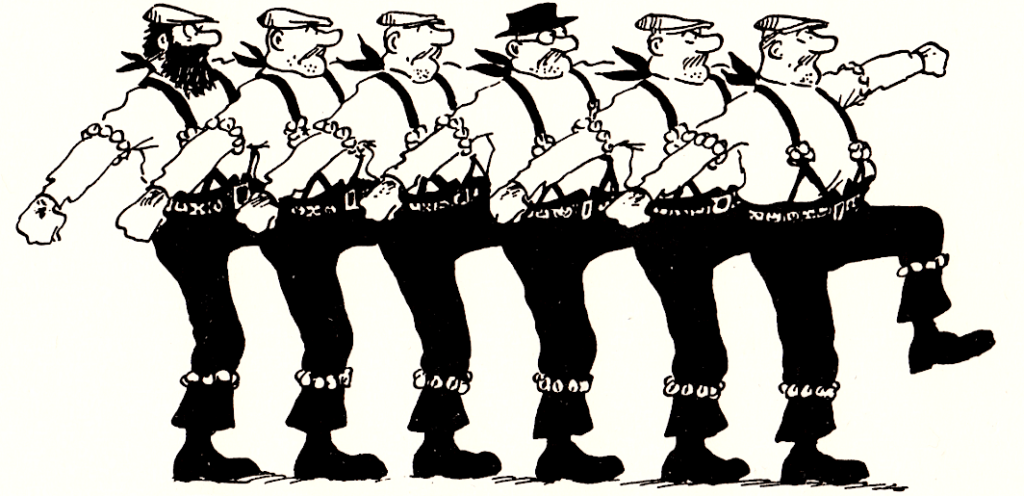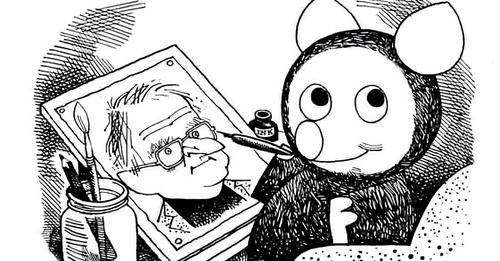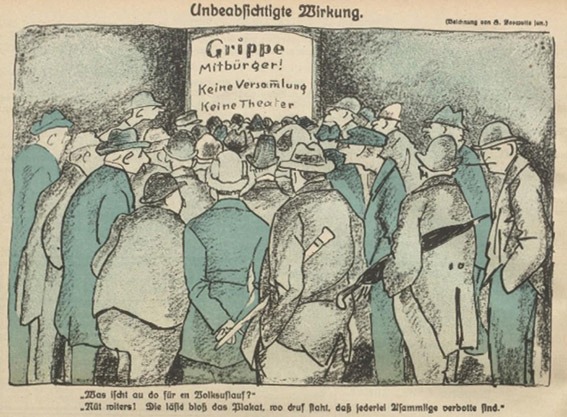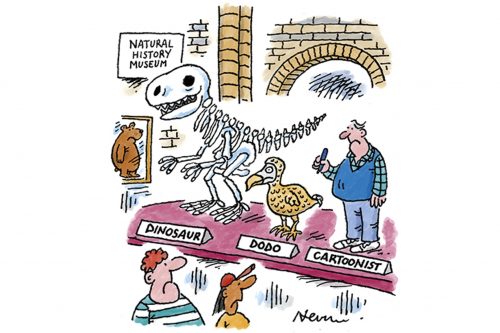ffolkes art

Dean Patterson writes: Why I’m championing the genius of Michael ffolkes. Although probably not entirely forgotten, Michael ffolkes (purposely lowercase) will always it seems have the epitaph that reads, ‘Martin Honeysett threw a cake over his head.’ This story stems from a Private Eye 21st birthday bash, where before it got a chance to be […]
Bill Tidy (1933-2023) – A Tribute

Drawing of ‘The Cloggies’ from Bill’s long running Private Eye strip. Rupert Besley writes: It’s funny what sticks in the memory. First kiss, first day at new school, first pint, first dive into a pool… To which I’d add, first sight of a Bill Tidy cartoon. 1965. We’d just moved house and my brother came […]
Wally Fawkes: an appreciation

Flook illustration Rupert Besley writes: Few people rise to the top of their profession. Very few are still in that position half a century on. And fewer still accomplish that in two careers at once. But this was the achievement of Wally Fawkes, loved and admired equally as jazz clarinettist and as the cartoonist […]
Shrewsbury Cartoon Festival Exhibitions 2022

Roger Penwill reports from Shropshire’s medieval county town: For its 19th year the Shrewsbury Cartoon Festival is represented by a collection of three exhibitions. At the Bear Steps Gallery, the festival’s spiritual home since the inaugural festival in 2004, are the Festival themed exhibition “Look and Learn” and an exhibition of work by the popular cartoonist Noel […]
Still Splitting Fog

Pandemic cartoon from Nebelspalter (1918) by Fritz Boscovitz. (The crowd is gathered round a sign saying, Flu – no assembly…’) Rupert Besley writes: As a student I had the good fortune several times to work abroad on holiday jobs in the north-east of Switzerland. Happy days. Swiss newspapers then were hard work to get through […]
Spectator Article: the future of cartooning

A rare mass-gathering of Private Eye cartoonists in 2013 (Rob Murray standing, 9th from right) Rob Murray writes in response to Nick Newman’s Spectator piece (see previous post): Nick Newman, one of the UK’s best and most prolific gag cartoonists, has written an article for this week’s Spectator about the challenges facing our art form. […]
Why does no one want to be a cartoonist any more? The lack of new blood doesn’t bode well for the industry’s future

Written by Nick Newman for (and courtesy of) The Spectator with bonus cartoon content. ‘Nightmare!’ is how The Spectator’s cartoon editor Michael Heath has been describing cartooning for at least 30 years, but it’s truer now than ever. Eighty years ago, cartoonists were so celebrated that waxworks of Low, Strube and Poy were displayed in […]
How to draw a virus: spare a thought for the Covid-19 cartoonists

Written by Guy Venables originally for The Spectator (with a smattering of bonus content cartoons): While stumbling the 30 yards from bed to work, the freelance gag cartoonist is usually trying to decide which of the hundreds of news stories to draw a hilarious cartoon about that day. It used to be one of the […]
Noel Ford 1942-2019

Noel with daughter Sara at Nottingham’s Big Grin Cartoon Festival 2003. Photo © Pete Dredge Pete Dredge writes: It’s a cruel irony that it is only when someone passes that the outpourings of love, praise and acknowledgement spill out from friends, colleagues and acquaintances. Such has been the response to the sudden and unexpected death […]
